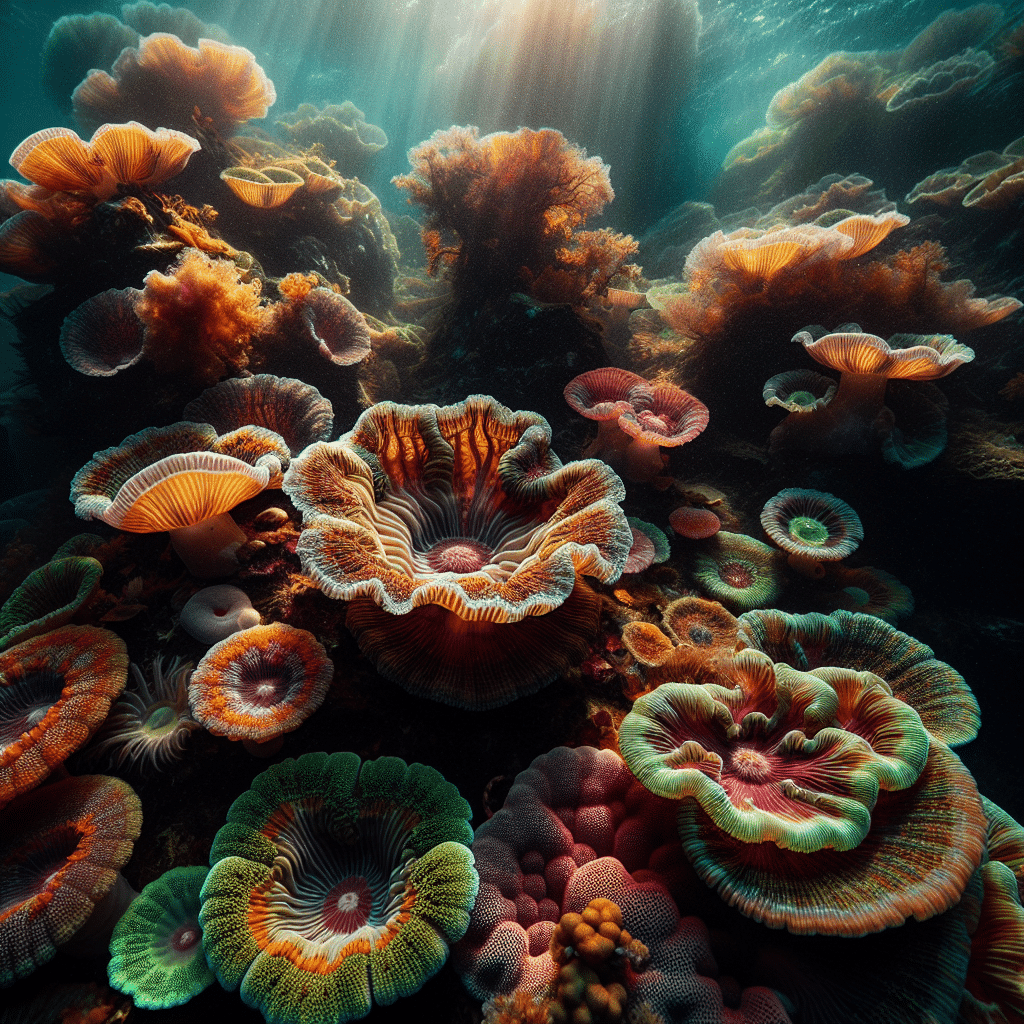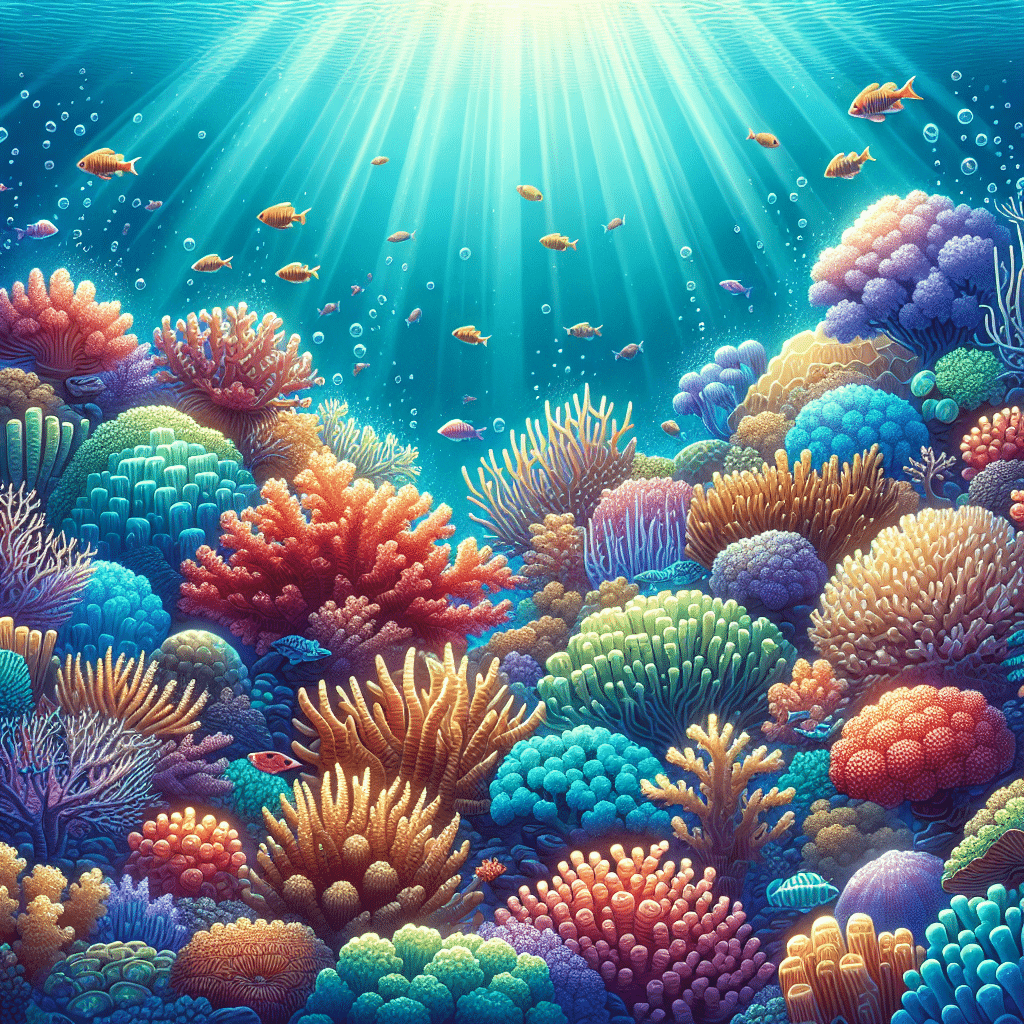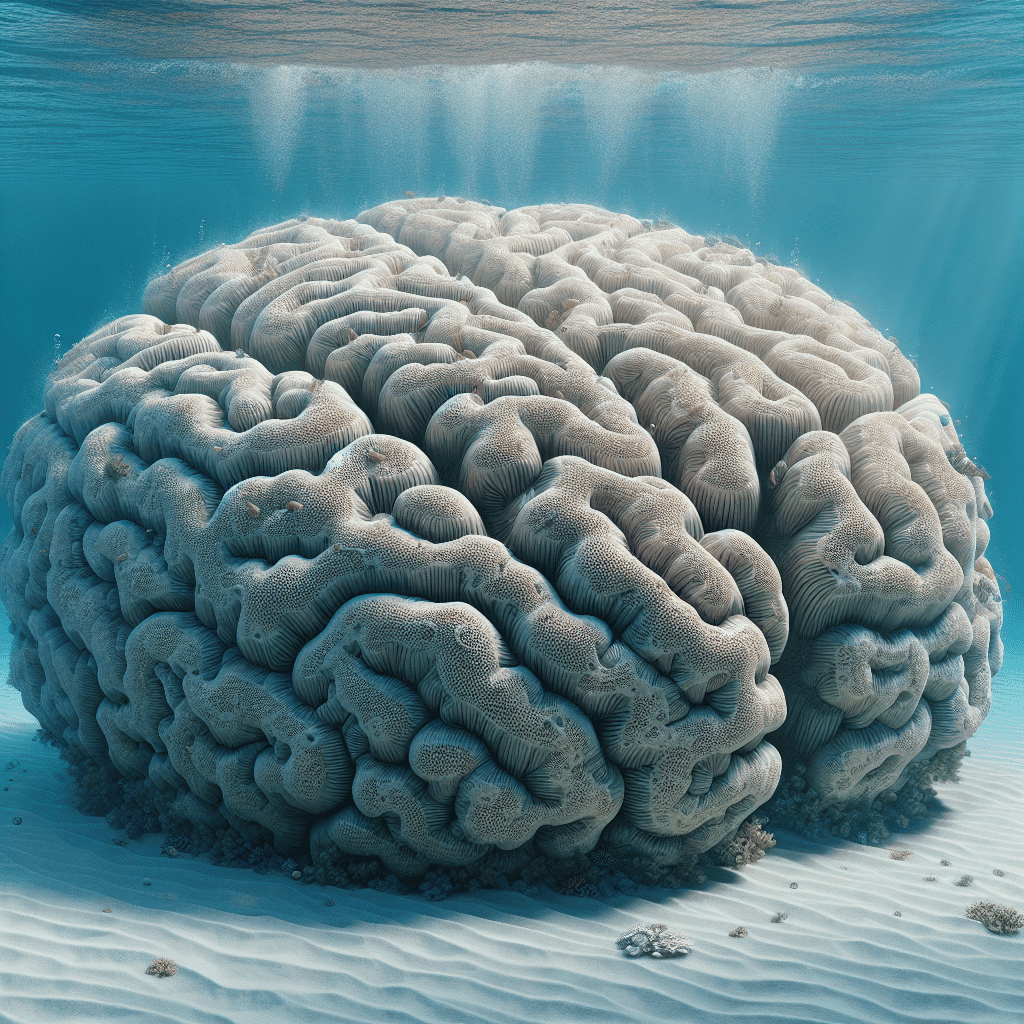Understanding Coral Reefs
Coral reefs are fascinating structures that I’ve come to appreciate deeply as a fish tank and reef tank hobbyist. They are not just beautiful but also vital to our oceans and the creatures that inhabit them.
Types of Coral Reef Formations
There are four main types of coral reef formations: fringing reefs, barrier reefs, atolls, and patch reefs. Fringing reefs are the most common and grow close to shorelines around islands and continents, separated by shallow lagoons. Below is a brief overview of these formations:
| Reef Type | Description |
|---|---|
| Fringing Reefs | Grow near shorelines, forming a shallow lagoon between the reef and the land. |
| Barrier Reefs | Located farther from the shore, they have a deeper lagoon separating them from the land. |
| Atolls | Ring-shaped reefs that encircle a lagoon, often found in deeper ocean waters. |
| Patch Reefs | Small, isolated reefs that can be found within larger reef systems. |
For more detailed information, you can check out this resource.
Importance of Coral Reefs
Coral reefs are the most diverse marine ecosystems, supporting around one-quarter of all ocean species. Despite covering less than one percent of the Earth’s surface, they provide critical habitats for a myriad of marine life. They are valued at approximately 30 billion U.S. dollars annually due to their role in providing food, protecting shorelines, supporting tourism, and even contributing to medical advancements (Smithsonian Ocean).
The largest coral reef, the Great Barrier Reef, spans 1,600 miles off the coast of Australia and is so massive it can be seen from space (Smithsonian Ocean). As someone who loves keeping corals in my tank, I find it crucial to understand their ecological significance, as it helps me appreciate the delicate balance of the marine environments I’m trying to replicate.
Exploring and caring for corals like cup coral can enhance my tank and contribute positively to the ecosystem. If you want to dive deeper into different types of corals, check out our articles on brain coral, mushroom coral, and acropora.
Exploring Cup Corals
Tubastraea Coccinea Overview
I find the Tubastraea Coccinea, commonly known as cup coral, to be a fascinating species. This hard coral, primarily orange cup coral, is native to the Indo-Pacific region but has made its way across the Tropical Western Atlantic, including areas like the Caribbean and the Gulf of Mexico. It was first spotted in Puerto Rico and Curacao back in 1943 and has since expanded its range to the southeast coast of Brazil and northwest into the Gulf of Mexico (NOAA Flower Garden Banks).
What sets cup coral apart is its lack of symbiotic algae, meaning it doesn’t rely on photosynthesis for energy. Instead, it thrives in shaded vertical areas such as dock pilings, walls, and small caves, which makes it quite unique among corals.
Habitat and Distribution
Cup coral prefers shaded environments, often found on vertical surfaces. This could include dock pilings and overhanging ledges. In the Gulf of Mexico, it has become remarkably abundant, especially on oil and gas production platforms. It’s estimated that hundreds of thousands of colonies could exist on a single platform (NOAA Flower Garden Banks).
Here’s a quick overview of its habitat and distribution:
| Region | Notable Locations | First Observed |
|---|---|---|
| Indo-Pacific | N/A | N/A |
| Caribbean | Puerto Rico, Curacao | 1943 |
| Gulf of Mexico | Oil and gas platforms | N/A |
| Southeast Brazil | Coastal areas | N/A |
The unchecked spread of orange cup coral in shallow reef ecosystems, particularly in Brazil, raises concerns among scientists regarding its ecological impact. It’s essential for hobbyists like me to be aware of these developments, especially when considering tank setups and the introduction of new coral species. If you’re also interested in other coral species, check out my articles on brain coral and mushroom coral for more insights!
Orange Cup Coral Characteristics
Exploring the characteristics of the orange cup coral, especially if you’re considering adding this species to your reef tank, is essential for its care and placement.
Physical Description
The orange cup coral, scientifically known as Tubastraea sp., is a hard coral species that resembles an anemone. Its small, individual polyps are cylindrical with tapered, brightly colored tentacles extending from the top. These polyps are attached to a cup-like limestone skeleton, which anchors them to sturdy surfaces like dock pilings, underwater caves, or offshore oil rigs.
Here’s a quick reference table for its characteristics:
| Characteristic | Description |
|---|---|
| Color | Bright orange or yellow |
| Polyp Shape | Cylindrical with tapered tentacles |
| Skeleton Type | Cup-like limestone skeleton |
| Habitat | Shaded vertical areas |
Unlike many other corals, orange cup corals lack symbiotic algae and do not rely on photosynthesis for nutrients. They thrive in shaded vertical environments, which makes them ideal for specific placements in aquariums.
Feeding Behavior
Orange cup corals are sessile suspension feeders. They grab small animals and organic particles that flow by in the water. Since they thrive in areas with constant water flow, it’s important to ensure that your tank mimics this condition to enhance their feeding opportunities.
Their feeding strategy is quite different from many reef-building corals. Here are some key points about their feeding behavior:
- Feeding Mechanism: They utilize their tentacles to capture food particles from the water.
- Diet: They primarily feed on zooplankton and other small organic particles.
- Feeding Conditions: They do best in areas with consistent water movement to increase food availability.
Orange cup corals can survive in a range of temperatures, making them more resilient than many other coral species. Understanding these characteristics is crucial for their care in a reef tank setting. If you’re interested in exploring more types of corals, check out our articles on brain coral, mushroom coral, and torch coral.
Spread and Impact of Orange Cup Coral
Invasive Nature
The orange cup coral, scientifically known as Tubastraea sp., is an invasive species that has made quite a splash in the marine ecosystems of the Tropical Western Atlantic. Originally from the Indo-Pacific, it was first spotted in the Caribbean and Gulf of Mexico in 1943. Since then, it has steadily migrated along the southeastern coast of Brazil and into the Gulf of Mexico (NOAA Flower Garden Banks).
In fact, in the Gulf of Mexico, orange cup coral has become the dominant coral species, especially around oil and gas production platforms. It’s estimated that a single platform can host hundreds of thousands of these colonies. This rapid spread is concerning as it disrupts local ecosystems and outcompetes native coral species for space and resources.
| Year First Observed | Location |
|---|---|
| 1943 | Puerto Rico |
| 1943 | Curacao |
| 1948 | Ship hulls |
Concerns and Challenges
The unchecked spread of orange cup coral poses significant challenges for marine ecosystems. Scientists have identified two major concerns. First, its rapid proliferation across shallow reef ecosystems in Brazil threatens the biodiversity of these areas. The presence of orange cup coral can lead to the displacement of native species, such as sponges and soft corals, as it grows quickly and occupies space that might otherwise be available for these organisms.
Second, the orange cup coral’s impact on oil and gas platforms is noteworthy. While these structures provide habitat for various marine life, the overwhelming presence of orange cup coral may create an imbalance. Furthermore, these corals are vulnerable to ocean acidification, which weakens their limestone skeletons, complicating their survival in a changing environment (National Marine Sanctuary Foundation).
Additionally, research suggests that orange cup corals utilize chemical defenses to deter predators and inhibit the settlement of other organisms. This ability aids in their invasive success but further complicates efforts to manage their populations in non-native habitats. The challenges posed by orange cup coral highlight the need for careful monitoring and management strategies to protect native marine ecosystems.
For more information on different types of corals and their care, check out our articles on corals and specific coral types like brain coral and mushroom coral.
Conservation Efforts
Control Methods
When it comes to managing the spread of orange cup coral, I’ve learned that initial attempts at control through physical removal haven’t been very successful. The removal process is quite challenging, and unfortunately, the corals tend to grow back quickly. There’s also a risk that during removal, small fragments may break off and contribute to the coral’s spread (NOAA Flower Garden Banks).
In places like the Flower Garden Banks National Marine Sanctuary, staff are actively working to physically remove orange cup coral from the reef to prevent it from establishing a more significant presence in the ecosystem. While these control methods may slow down the pace or range of the coral’s invasion in certain areas, they are not foolproof.
| Control Method | Effectiveness | Challenges |
|---|---|---|
| Physical Removal | Limited | Quick regrowth, risk of spreading |
| Chemical Treatment | Under Research | Unknown long-term effects on ecosystem |
Impact on Ecosystems
The impact of orange cup coral on ecosystems can be quite significant. These corals are known to outcompete native species, displacing sponges and soft corals. I’ve read that they spread and grow rapidly, which can leave little room for native species to settle and thrive.
Additionally, orange cup corals possess chemical defenses that deter predation and prevent other organisms from settling nearby, further complicating the ecosystem dynamics (National Marine Sanctuary Foundation).
The rising levels of oceanic carbon dioxide also compound these issues. Ocean acidification, which has increased by 30 percent over the last 200 years, poses a serious threat to corals by weakening their limestone skeletons, making it harder for them to survive (Smithsonian Ocean). This not only affects orange cup corals but also jeopardizes the many species that rely on coral reef structures for their habitat.
In summary, while various control methods are being explored, the ecological consequences of orange cup coral’s spread are a growing concern, especially in the context of changing ocean conditions. For hobbyists like us, understanding these dynamics is crucial for maintaining a healthy reef tank.
Coral Reproduction
Corals are fascinating creatures with unique reproductive strategies that allow them to thrive in diverse marine environments. They can reproduce both asexually and sexually, ensuring their populations remain stable and continue to grow.
Asexual Reproduction
Asexual reproduction in corals primarily occurs through budding or fragmentation. In budding, a coral polyp divides to produce a genetically identical new polyp. This process allows corals to expand their colonies over time. Fragmentation happens when a part of a colony breaks off and establishes itself as a new colony. This method is particularly beneficial for reef tank hobbyists, as it enables them to propagate their favorite corals, like torch coral or brain coral.
| Method | Description |
|---|---|
| Budding | A polyp divides to create a new genetically identical polyp. |
| Fragmentation | A piece of the coral colony breaks off to form a new colony. |
Sexual Reproduction
In contrast, sexual reproduction involves the fertilization of eggs by sperm, typically from another coral colony. Most stony corals are broadcast spawners, releasing eggs and sperm into the water column. These gametes float toward the surface, where fertilization occurs. The resulting larvae eventually settle on a suitable substrate, growing into new polyps. This method of reproduction is crucial for genetic diversity within coral populations and helps maintain healthy coral reefs.
| Stage | Description |
|---|---|
| Gamete Release | Eggs and sperm released into the water for fertilization. |
| Fertilization | Occurs in the water column, leading to the formation of larvae. |
| Settlement | Larvae settle on a substrate and develop into new polyps. |
Understanding these reproductive methods is essential for coral care, especially for reef tank enthusiasts like me. By knowing how corals propagate, I can better manage my tank and ensure a thriving environment for my corals, including species like mushroom coral and acropora. Keeping an eye on the health and growth of my corals will contribute to a vibrant and sustainable reef ecosystem in my aquarium. For more information on different coral species, check out our articles on xenia and duncan coral.
Threats to Coral Reefs
Coral reefs are facing numerous threats that can impact their health and survival. As a reef tank hobbyist, I find it essential to understand these challenges, especially when caring for corals like cup coral.
Ocean Acidification
One of the most significant threats to coral reefs is ocean acidification. This occurs when increased levels of carbon dioxide (CO2) in the atmosphere are absorbed by the oceans, leading to a drop in pH levels. Over the past 200 years, ocean acidification has increased by 30%, which is faster than any known change in ocean chemistry in the last 50 million years (Smithsonian Ocean). This rising acidity makes it harder for corals to build their calcium carbonate skeletons, which are crucial for their structure and survival.
Deep-water corals, such as the cockscomb cup coral, are particularly vulnerable since they naturally reside in more acidic environments. Scientists warn that if CO2 emissions aren’t reduced, the waters where these corals live might become acidic enough to dissolve their skeletons, endangering not only the corals themselves but also the myriad of marine species that depend on coral reefs for habitat (Oceana).
| Threat | Impact on Corals |
|---|---|
| Ocean Acidification | Difficulty in building calcium carbonate skeletons |
| Increased Acidity | Potential dissolution of coral structures |
Human-Induced Threats
In addition to ocean acidification, human-induced threats also pose significant risks to coral reefs. Destructive fishing practices, particularly bottom trawling, can severely damage deep-sea coral reefs by scraping corals off the seabed and flattening their three-dimensional habitats. This disrupts the delicate balance of marine ecosystems and threatens the survival of various coral species (Oceana).
Furthermore, coastal development, pollution, and climate change contribute to the degradation of coral habitats. As a hobbyist, I recognize the importance of maintaining water quality in my reef tank, as poor conditions can lead to stress and disease in corals. Protecting coral ecosystems is crucial not only for the corals themselves but also for the wide range of marine life that relies on these habitats.
Understanding these threats helps me make informed decisions about the care and placement of corals in my tank. For more information on caring for various coral types, check out our articles on brain coral, torch coral, and acropora.
Coral Reef Conservation
Importance of Conservation
Coral reefs are incredibly vital ecosystems. They are home to about a quarter of all ocean species, providing food, shelter, and breeding grounds. Despite covering less than one percent of the earth’s surface, the benefits they offer are immense, with an estimated value of around $10 trillion annually. This includes not just marine biodiversity, but also economic benefits like tourism, fishing, and coastal protection from storms and erosion (Shedd Aquarium). Given their ecological and economic significance, conservation efforts are essential to maintain these vibrant underwater communities.
Protecting Coral Ecosystems
To safeguard coral reefs, we need to focus on several conservation strategies. One of the most pressing threats is ocean acidification, which has increased by 30 percent in the last 200 years. This acidification makes it harder for corals to build their calcium carbonate skeletons.
Here are some key methods for protecting coral ecosystems:
| Conservation Method | Description |
|---|---|
| Sustainable Fishing Practices | Implementing regulations to prevent destructive fishing techniques, like bottom trawling. |
| Marine Protected Areas (MPAs) | Establishing MPAs to limit human activities in critical habitats. |
| Pollution Control | Reducing runoff from agriculture and urban areas to improve water quality. |
| Restoration Projects | Actively restoring damaged reefs through coral gardening or transplantation. |
By adopting these methods, we can help ensure that coral reefs, including unique species like cup corals, continue to thrive for future generations. The health of these ecosystems directly impacts marine life and human communities alike, making it crucial for all of us to play a role in their protection. For more information on specific types of corals, feel free to explore related articles such as brain coral and mushroom coral.



